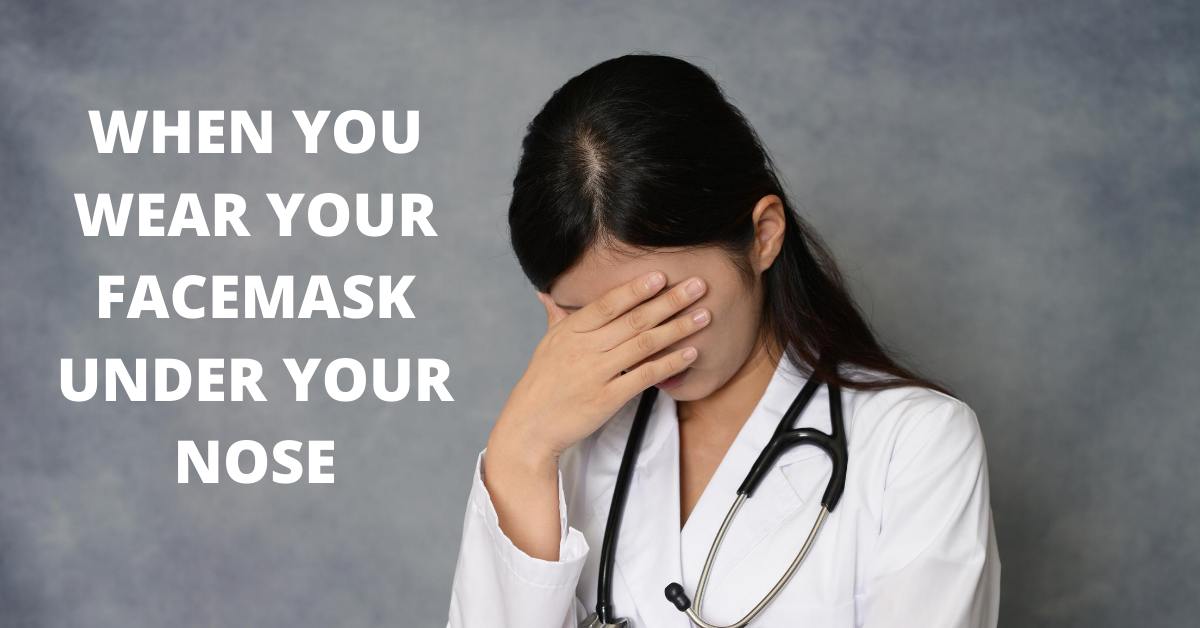
We’re the ones who have been telling you not to touch your face, but there are some things we see that make it hard not to go straight to a facepalm. Since mask mandates were enacted June 26 for North Carolina, we have been happy to see more people wearing face masks properly and practicing social distancing. Most patients in our offices are doing the right things and making good choices. However, when we’re testing 200 people a day in the Charlotte area for coronavirus, we’re inevitably seeing many simple but serious missteps.
It’s time for some (socially distant) tough love from your doctor. Avoid these five mistakes we’re seeing people make and keep living your best COVID-free life.
1. Pausing precautions during holidays.
COVID-19 doesn’t get paid time off; it is all around us, all the time. It has been well documented that coronavirus spiked in nine states immediately following Memorial Day, starting a deadly upward trend. Since the July Fourth holiday, we have tested nearly 200 people every day, triple our numbers in April and May. We are very concerned about a major spike in COVID-19 cases after Labor Day. Consider “celebrating small” and having a low key Labor Day.
2. Avoiding immediate isolation.
When a family member or friend tells you they were exposed to COVID-19 before your last visit, then you have been exposed too. It is extremely important that you isolate immediately. Whether you’ve just scheduled a grocery pickup, your dog has a vet appointment or you need a haircut – isolate means isolate. Don’t go anywhere except to get a test, and stay home while you wait for your results. Lean on no-contact home delivery for groceries and food, or ask your family and friends to make driveway drop-offs.
3. Wearing a mask under your nose.
A recent University of North Carolina at Chapel Hill study found that coronavirus infects the cells in the nose much more easily than those in the throat and lungs. The human nose is the body’s first line of defense and catches virus molecules in hair and mucus. Wearing a mask blocks most large virus-carrying droplets that come out of the nose, like from a sneeze. If you commonly wear your face covering under your nose, or you take it off when you need to talk, you could be unintentionally putting those around you at risk. Now that you know, check out our Face Mask 101 to learn more about what makes face coverings effective.
4. Ignoring symptoms.
Remember that COVID-19 does not feel the same for everyone. You may have no symptoms, or simply feel a little off. Early in the pandemic we stressed fever, cough and difficulty breathing as the hallmarks of COVID-19. As we have learned more about the disease, our symptoms list has grown to include loss of taste or smell, nausea or vomiting and even diarrhea.
5. Testing at the wrong time.
Testing too soon leads to misleading false negative results. If you are showing symptoms, you should be tested no earlier than 48 hours from the time your symptoms began. The ideal time to be tested is when you have been symptomatic for three days, which ensures a more accurate result. If you have been exposed and are asymptomatic, we recommend testing no earlier than four days after exposure. Testing four to seven days after exposure ensures a more accurate result. The kind of test used also matters. Rapid tests and nasal swabs have their place but nasopharyngeal swabs, like the ones used at our satellite testing sites, are the most accurate.
As we’ll soon enter flu vaccine season, the next several weeks are critical in the fight to slow the spread of COVID-19. If ever there was a time to wear a mask, practice social distancing and wash your hands, it’s now! As you work to find your new normal, please stay vigilant. Have a safe and happy Labor Day weekend.
